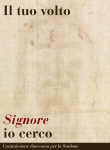THE SHROUD AND THE GOSPELS

An image of a man is visible on the Shroud cloth, of which not only the condition of death but also the cause of death is identifiable: the crucifixion.
Although the image presents some reading difficulties, due to an inversion of light-dark tones similar to those of the photographic negative, some characteristics are distinguished, such as that of corpse rigidity and the absence of any sign of putrefaction.
There are also numerous signs of scourging wounds on the body, the presence in the hands and feet of holes from a sharp body wound (the nails), the signs of numerous punctures on the scalp, a large wound on the left side (on the Shroud, and therefore right side on the man who was wrapped in it).
The signs of the Shroud find a direct confirmation in the testimony of the Gospels about the capital execution of Jesus of Nazareth: crucifixion preceded by scourging, beating on the face, crowning with thorns, use of nails for the crucifixion itself, and followed by the wound inflicted with the light spear from one of the soldiers while the legs are not broken, according to the prophecy reported in Ex. 12, 46 and quoted in Jn. 19.36. The same characteristics of the liquid leaking from the wounds (identified on the Shroud as human blood of the AB group can be distinguished, on the Shroud sheet, as due at the time of the shedding, before or after death (corpse blood).
It is appropriate to speak of an exceptional correspondence (without any other comparable example) between the testimony of the resurrection event according to the Gospels. The Gospel accounts of the burial of Jesus are less clearly interpretable than those of the crucifixion, because the synoptics (Mark, Matthew and Luke) are more sparing of details, while John speaks of “sheets” in the plural, of a shroud used for Jesus, and of a discovery of his empty tomb, where, however, the burial cloths without the body of the deceased can still be seen.
There does not seem to be any contradiction between the synoptics and John, nor even between John and the Shroud, if one thinks that a shroud-sized sheet had to lie abandoned on the sepulchral stone folded in half and therefore with the appearance of a top sheet and of one below; the shroud may have been the handkerchief of the chin guard, rolled up. It is therefore justified to say that between the Gospel story and the Shroud “story” of the burial of Jesus there is no contrast, but possible completion.

